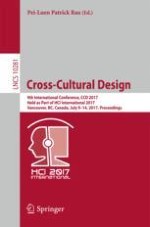This book constitutes the proceedings of the 9th International Conference on Cross-Cultural Design, CCD 2017, held as part of the 19th International Conference on Human-Computer Interaction, HCII 2017, held in Vancouver, Canada, in July 2017. HCII 2017 received a total of 4340 submissions, of which 1228 papers were accepted for publication after a careful reviewing process. The papers thoroughly cover the entire field of Human-Computer Interaction, addressing major advances in knowledge and effective use of computers in a variety of application areas.
The 60 papers presented in the CCD 2017 proceedings are organized in topical sections: cultural foundations of design; cross-cultural product and service design; cross-cultural communication; design for social development; cross-cultural design for learning.
